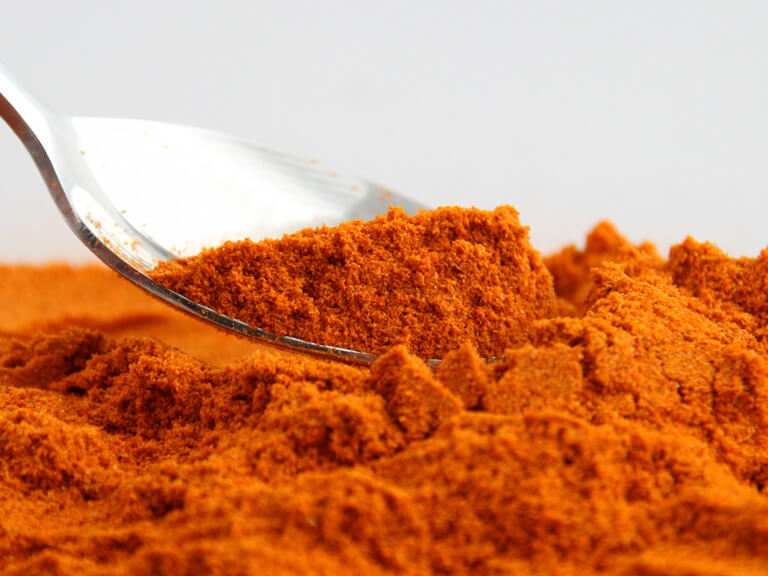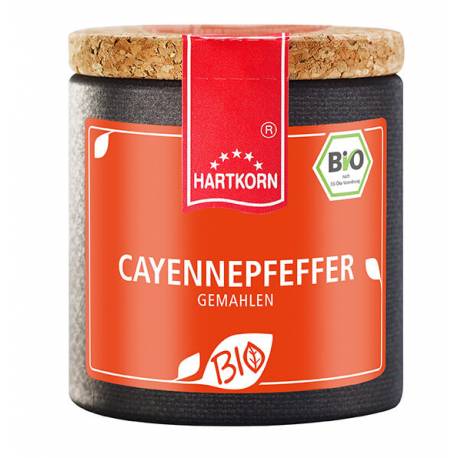Synonyms: Botanical family: origin: Classification: spice shape: flavor: odor: use: All types of chilies taste burning hot, some even extremely hot. The smell is characteristic, and even tiny particles irritate you to sneeze after inhalation. In the kitchen, chilies are used whole, crushed or ground mainly for fiery-hot meat dishes. They are also suitable for seasoning preserves or preparing various pickles. tip: Recipe suggestion: knowledge: Botany: home & distribution: cultivation & extraction: history: Cayenne Pepper
Allgemeines
Application
Things to know
 Botanical name:
Botanical name:
Capsicum frutescens L.
chili, chilli, pepperoni, guinea pepper
shade family
USA, northern South America, Africa and Southeast Asia
spice
fruit
burning hot
almost odourless
Pork, fish and tomato soups, marinades, sauces
For all dishes that require a certain spiciness excellent
Gypsy sauce: Cut 2 peppers and 1 onion into small cubes, fry with a pinch of salt and cayenne pepper, 1 teaspoon of sugar, 1 pint of garlic powder and 1 tablespoon of butter. Mix 1 teaspoon of tomato ketchup with 1 cup of cream, fold in and bring to the boil briefly. If necessary, thicken a little and season with cayenne pepper.
botany: Paprika and chili fruits are distinguished according to their degree of sharpness (Scoville Scala 0-1 Mio SU). Cayenne pepper is about 30 000 SU
The close relative of the spice and vegetable paprika from the nightshade family is a perennial shrubby plant, which is cultivated in several subspecies and reaches a height of 1.5 to 1.8 m. The branches are richly leafy. Two or more small greenish-white flowers sprout from the leaf axils, from which the dull conical or cherry-shaped fruits, the chilies, develop, depending on the form of cultivation. The former are 1.5 to 3.0 cm long and 0.6 to 0.8 cm wide, the latter have a diameter of about 2.0 to 2.5 cm. The fruits are initially green, but when ripe they are smooth and shiny orange-red to dark red.
The home of the chilies is the tropical Central and South America, where they are grown in large quantities today. But also in the southern USA, in Nigeria, Uganda, Tanzania, Ethiopia, Turkey as well as in India, Thailand and Japan chilies are cultivated.
The plant is well suited for large-scale cultivation in fields, although harvesting must be done manually, as the individual fruits reach full ripeness at different times. The picked fruits are dried and are sold whole, roughly crushed or ground.
With the discovery of the New World, the chillies came to Europe together with the paprika. The Spanish, together with the Portuguese, spread their fiery "Spanish pepper" and ensured the worldwide cultivation of the numerous types of chilies.
http://de.wikipedia.org/wiki/Cayenne_(Pflanze)







